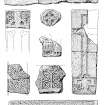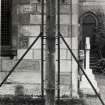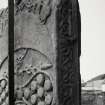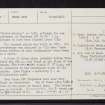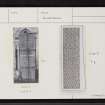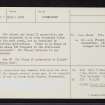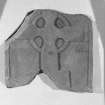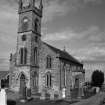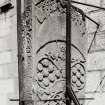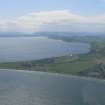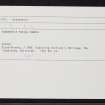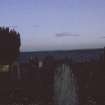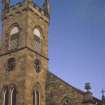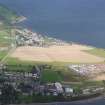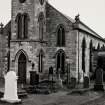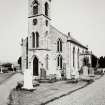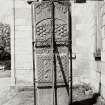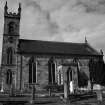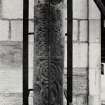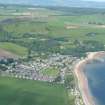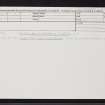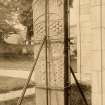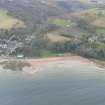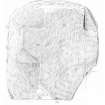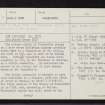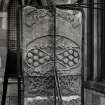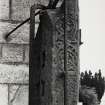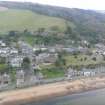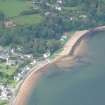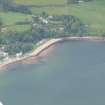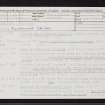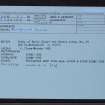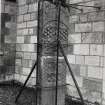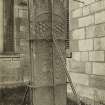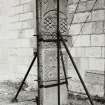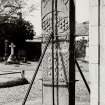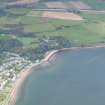Following the launch of trove.scot in February 2025 we are now planning the retiral of some of our webservices. Canmore will be switched off on 24th June 2025. Information about the closure can be found on the HES website: Retiral of HES web services | Historic Environment Scotland
Rosemarkie, Church Place, Rosemarkie Parish Church
Carved Stone(S) (Early Medieval), Church (Medieval), Church (19th Century), Church (18th Century), Cross Slab(S) (Pictish)
Site Name Rosemarkie, Church Place, Rosemarkie Parish Church
Classification Carved Stone(S) (Early Medieval), Church (Medieval), Church (19th Century), Church (18th Century), Cross Slab(S) (Pictish)
Alternative Name(s) High Street
Canmore ID 14392
Site Number NH75NW 7
NGR NH 73726 57631
Datum OSGB36 - NGR
Permalink http://canmore.org.uk/site/14392
- Council Highland
- Parish Rosemarkie
- Former Region Highland
- Former District Ross And Cromarty
- Former County Ross And Cromarty
NH75NW 7.00 73726 57631
(NH 7372 5763) Ch. (NAT)
OS 6" map, (1959)
Sculptured Stone (NAT)
OS 25" map, Ross-shire, (1906)
NH75NW 7.01 7372 5763 Cross-slab ('Rosemarkie no. 1')
NH75NW 7.02 7372 5763 Sculptured stone ('Rosemarkie no. 2')
NH75NW 7.03 7372 5763 Cross-slab ('Rosemarkie no. 3')
NH75NW 7.04 7372 5763 Sculptured stone ('Rosemarkie no. 4')
NH75NW 7.05 7372 5763 Sculptured stone ('Rosemarkie no. 5')
NH75NW 7.06 7372 5763 Cross-slab (possible) ('Rosemarkie no. 6')
NH75NW 7.07 73693 57616 Churchyard Wall, Gates and Gate Piers
NH75NW 7.08 737 576 Sculptured stone
NH75NW 7.09 737 576 Sculptured stone
NH75NW 7.10 737 576 Cross-slab
NH75NW 7.11 737 576 Sculptured stone
NH75NW 7.12 737 576 Sculptured stone
NH75NW 7.13 737 576 Sculptured stone
NH75NW 7.14 737 576 Cross-slab
NH75NW 7.15 737 576 Cross-slab
NH75NW 7.16 737 576 Sculptured stone
NH75NW 7.17 737 576 Sculptured stone
NH75NW 7.18 737 576 Sculptured stone
The modern church of Rosemarkie stands on a site whose Christian history probably dates back to a foundation of St. Moluag, who died in 592, and is said to be buried here. Moluag's monastery was taken over, possibly in 716, by St. Boniface or Curitan, as a Culdie community. He dedicated the church to St. Peter, but it also became known as St. Boniface's.
The Culdie community is thought to have been converted to a Chapter, with the abbot or prior as Bishop, by David I (1124-53). The first mention of the Bishop of Rosemarkie is in 1126, and, according to Pullan, Rosemarkie church was still known as the 'Kyrk-Cathedral' in 1338, although the new cathedral at Fortrose (NH75NW 1) is thought to have been founded about 1235.
The present church was built in 1821. Its predecessor was repaired in 1735 when 'some stone coffins of rude workmanship' were found in a vault.
A Class II cross slab, probably dating from about the 9th century, was found in the floor of the church. (Rosemarkie No. 1) It stands 8' 6" high, and is preserved in the churchyard close to the church.
Four Class III fragments have also been found in churchyard. One of these (Fig 83) (No.2) lies on the grave of Donald Bain. The others are in the National Museum of Antiquities of Scotland (NMAS). Rosemarkie No 3- NMAS 127 No 5?-NMAS 1B 120 No 4 - NMAS 1B 119.
A J Beaton 1855; D MacGibbon and T Ross 1896-7; J R Allen and J Anderson 1903; A M Philip 1904; N Macrae 1923; L Pullan 1927; R W Feachem 1963.
The church and class II cross-slab, the latter supported in an iron framework close to the west porch, are as described by previous authorities. There is no trace of the class III fragment in the still-used graveyard: Mr Fraser (A S Fraser, Clifton, Rosemarkie) believes it was removed.
Visited by OS (NKB) 16 March 1966.
The cross-slab was removed from near the door of the church several years ago, to be repaired. It is now in Groam House Museum, Rosemarkie.
RCAHMS 1979; Information from Miss F Bassindale, 2 May Court, Inverness.
Class II symbol stone bearing a cross on the face.On the reverse are three wide crescents and V-rods with a wide double-disc and Z-rod,containing a comb, between the second and third. Below these symbols are two small mirrors.
A Mack 1997.
Sculptured slabs; cross slabs - outside survey area.
Later 1st Mill AD.
CFA/MORA Coastal Assessment Survey 1998.
NH75NW 7.00 73726 57631
NH75NW 7.07 73693 57616 Churchyard Wall, Gates and Gate Piers
1818-21, on site of medieval church rebuilt 1734 (Presbytery records in SRO)
ARCHITECTS: Alexander Ross (I.C. 13 Jan 1876) Alterations
John Robertson (I.C. 23 Mar 1894) Alterations, incl. new pulpit
BELL: in tower; height 0.45m incl. 0.11m canons, diam at mouth 0.43m. Inscription incised except for date (?added to bell bought from stock):
(in frieze) CAST FOR THE CHURCH OF ROSEMARKY ANNO 1753 /
THIS v BELL v WAS v PURCHASED v BY MR IOHN WOOD MINISTER /
TOWN v AND v PARISHES
Field Visit (June 1979)
Rosemarkie, Carved Stones NH c. 737 576 NH75NW 7
The discovery of numerous 'Pictish' carved stones in the vicinity of Rosemarkie church
indicates that this site was one of considerable importance during Early Christian times.
Of the nine items described below (1) is in Groam House, High Street, Rosemarkie; (2) and (6)-(8) are in the tool-shed at Rosemarkie church; (3)-(5) are in the National Museum of Antiquities of Scotland; and (9) is in Inverness Museum.
(1) * This Class 11 'Pictish' cross-slab bears a complex design which incorporates double disc, crescent, Z- and V-rod symbols, and zoomorphic interlaced decoration; it was discovered within the former parish church before 1821.
(2) At least four fragments remain of this· Class III 'Pictish' symbol stone; it bears key-pattern decoration on one face.
(3) What may be a fragment of a Class III 'Pictish' cross-slab (NMAS I 8 127) bears a representation of a beast attacking a man; it was discovered in the churchyard.
(4) What may be a fragment of a Class III 'Pictish' cross-slab (NMAS I B 119) bears a representation of two draped figures, probably ecclesiastics; it was discovered in the churchyard.
(5) This fragment of a Class III 'Pictish' symbol stone (NMAS I B 120) bearsborders of interlaced-work and plaited decoration; it was discovered in the churchyard.
(6) Two fragments remain of this sandstone slab which bears an outline Latin cross with rounded armpits and concave-ended sidearms.
(7) This sandstone slab bears an outline cross quadrate having a sunken cross shaped pattern at the centre of the cross-head. Above the cross-head there are traces of the lower part of a four-legged creature whose head and body have been removed by the shortening of the slab.
(8) This sandstone slab measures 1.55m by 0.46m and 30mm in thickness; it
bears key-pattern decoration on one face.
(9) In 1975 this fragment of a sandstone slab (INVMG 978-259) bearing the
upper part of a ringed cross adorned with serpent coils was found in a rockery at Courthill, Rosemarkie (NH 735 576).
RCAHMS 1979, visited June 1979
Allen and Anderson 1903, iii, 63-8, 85-8; Macdonald and Laing 1970, 137; Henderson 1971, 50-2














































